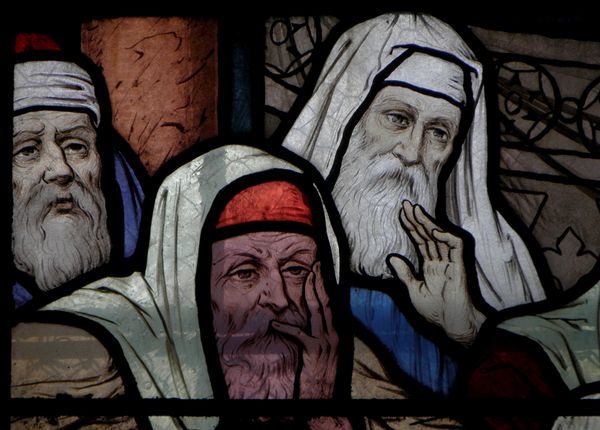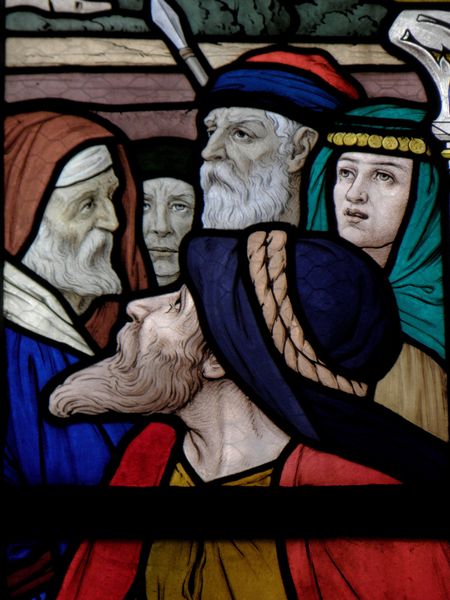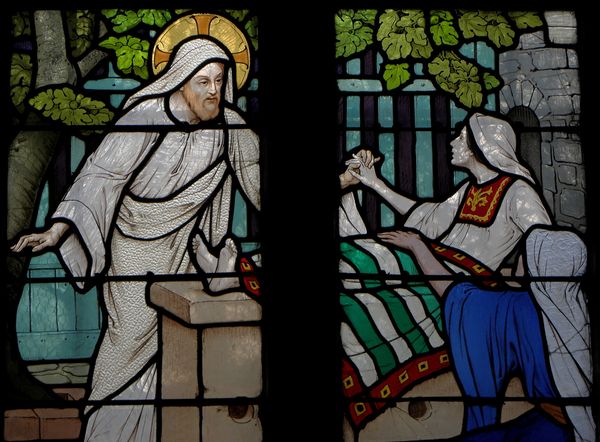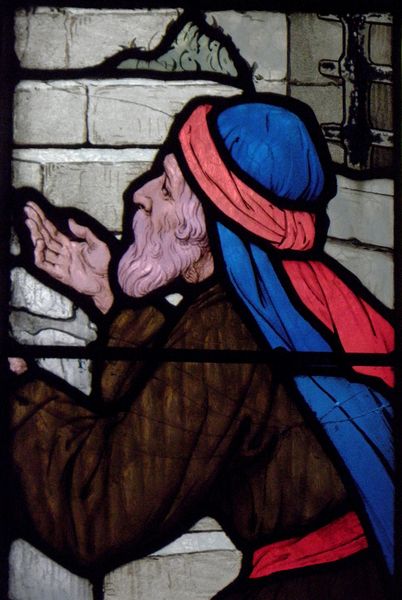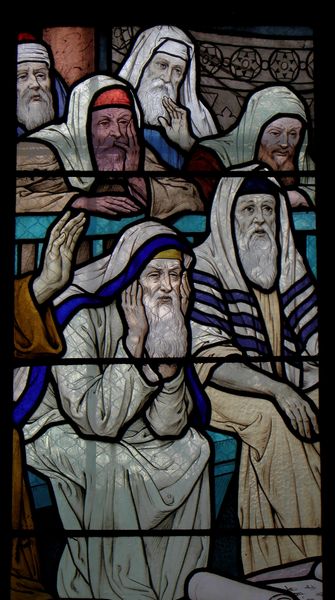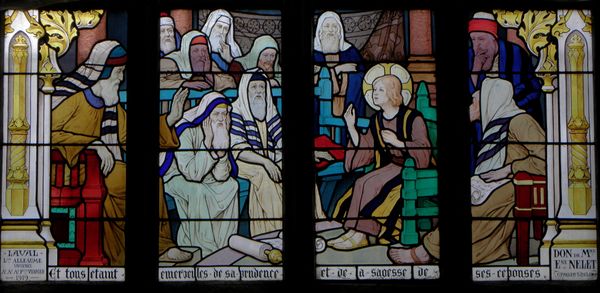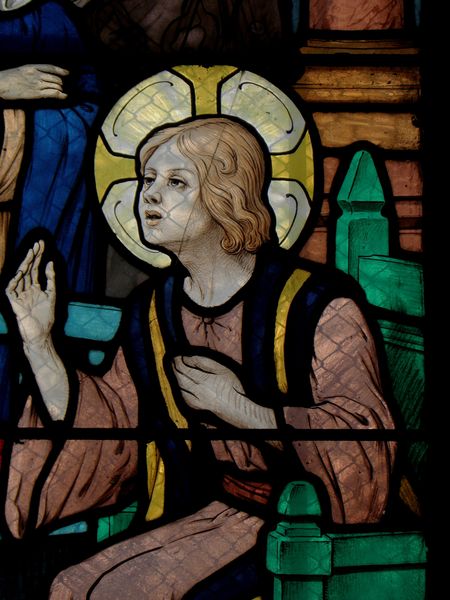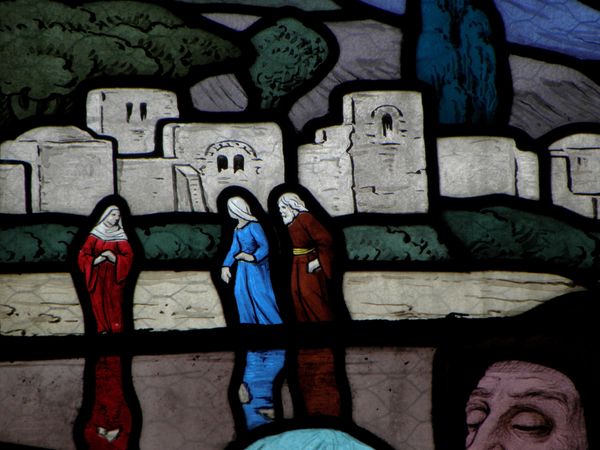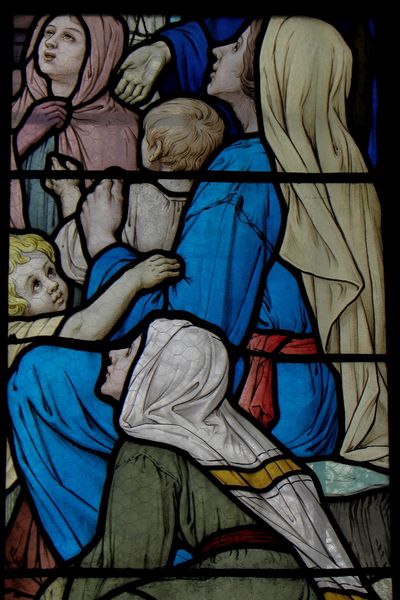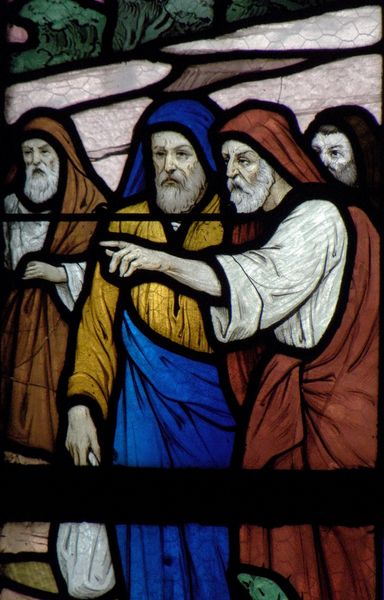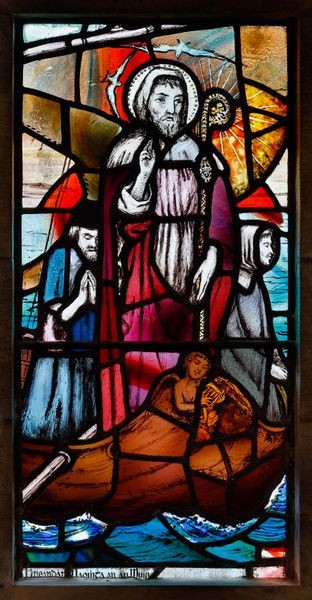
glass
#
narrative-art
#
figuration
#
glass
#
history-painting
Copyright: Public domain
Editor: This is a detail from Ludovic Alleaume’s "Life of Christ" made of glass in 1919, part of the Eglise Saint-Sulpice de Fougères. The figures have this almost somber, ethereal quality. I’m drawn to their faces, so expressive and pained. How do you read the emotional landscape here? Curator: Ah, stained glass, stories in light, and Alleaume paints a beautiful lament. For me, these aren’t just figures frozen in colored glass. Look closely – the woman on the left, almost a dove-like blue, her hand clasped to her chest - this intimate gesture radiates inward. There’s a powerful sense of sorrow in this composition. Have you ever considered how personal tragedy after World War I may have inspired the mournful expressions in the people, giving them their human likeness, imbuing with loss, suffering and sacrifice? Editor: I hadn't thought about that context specifically. So it's not only biblical grief we’re seeing, but perhaps also grief from recent historical events. That’s heartbreaking. I appreciate the perspective you bring here. Is the historical tragedy you cite one of the reasons why you interpret the artist using these people in familiar roles of mourning and remembrance of past traditions? Curator: Absolutely, and consider too how glass itself transforms under light, how transient these images can feel – moments flickering. And the narrative traditions they build are the cultural bricks where we draw on past knowledge of human behaviors and patterns, which only seem to continue. Editor: The effect of light certainly brings in some ephemeral life to these portraits. Now I’m contemplating grief, loss, light, and history – it all feels more complex than I initially thought. Curator: Exactly! That’s art's trick—turning flat colors into a multi-layered story! Now you have to look and feel, all at once.
Comments
No comments
Be the first to comment and join the conversation on the ultimate creative platform.
